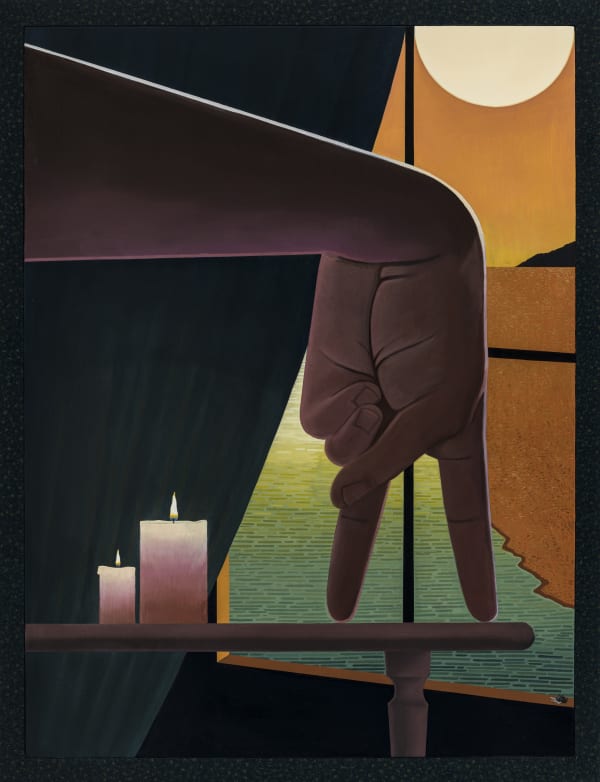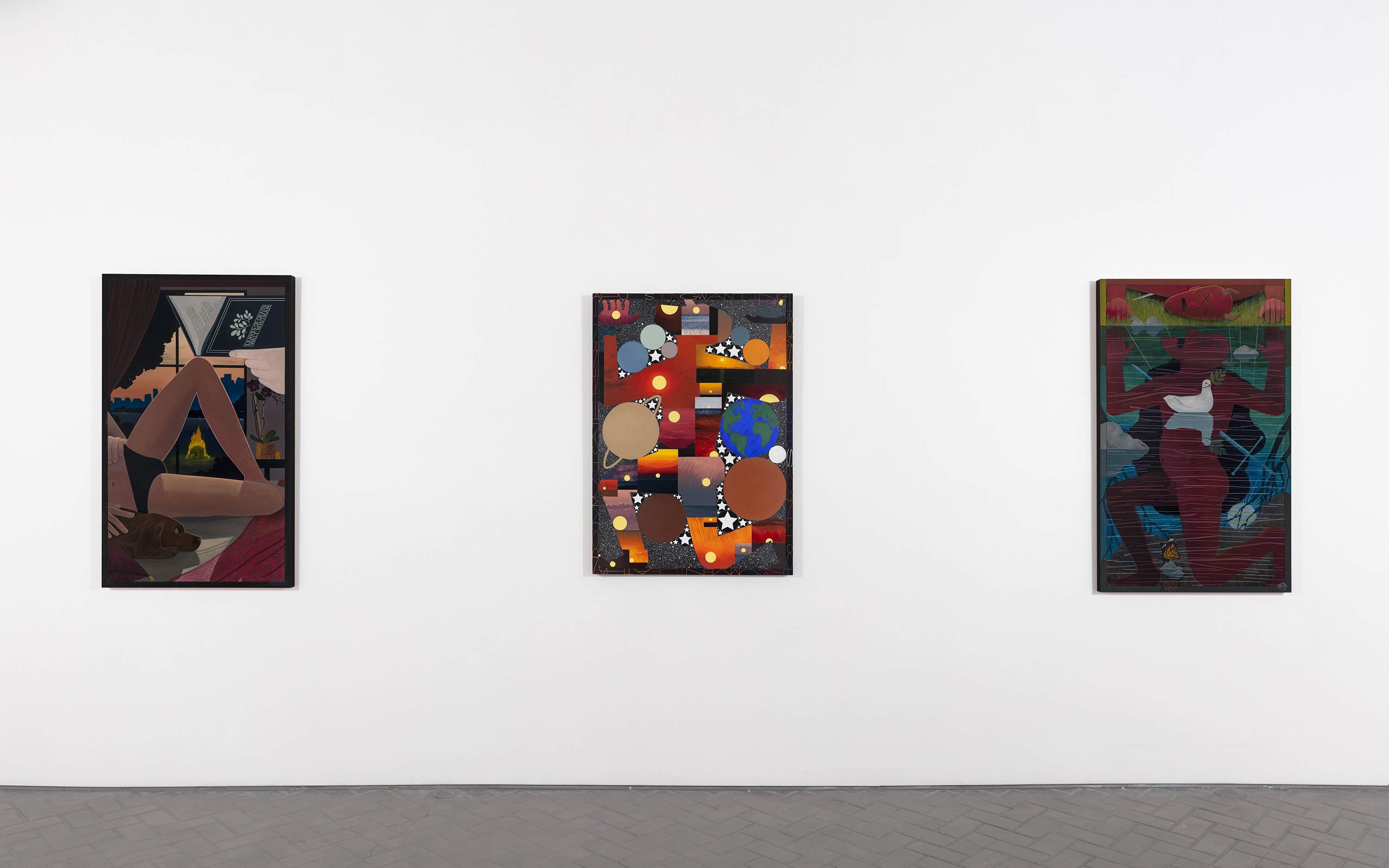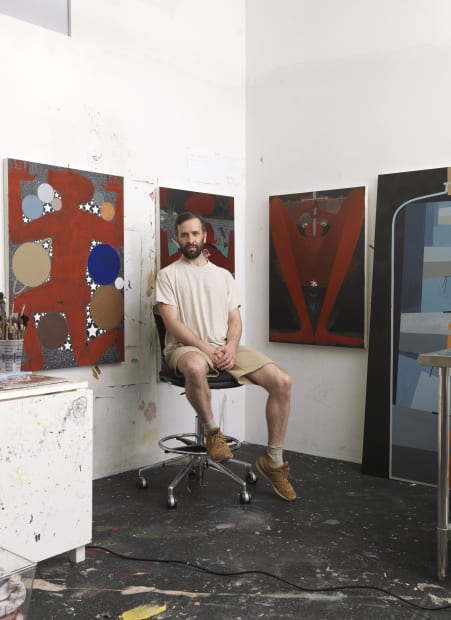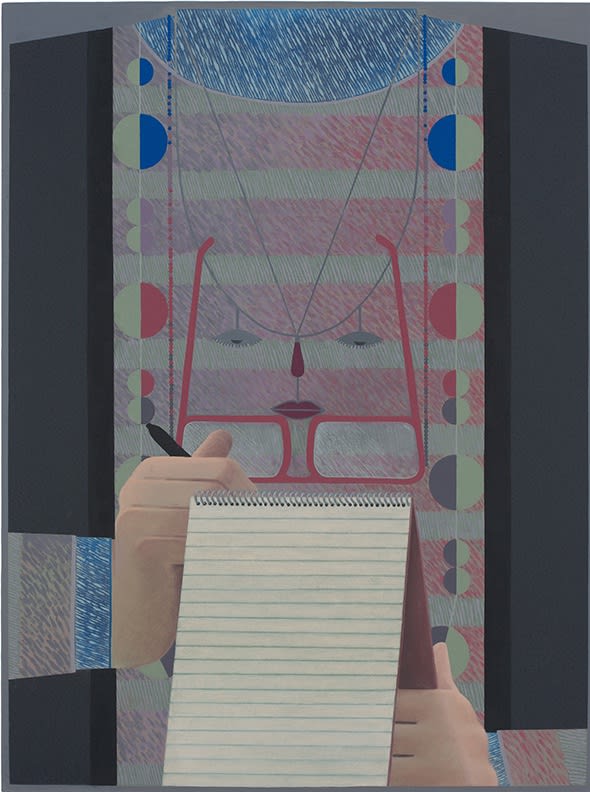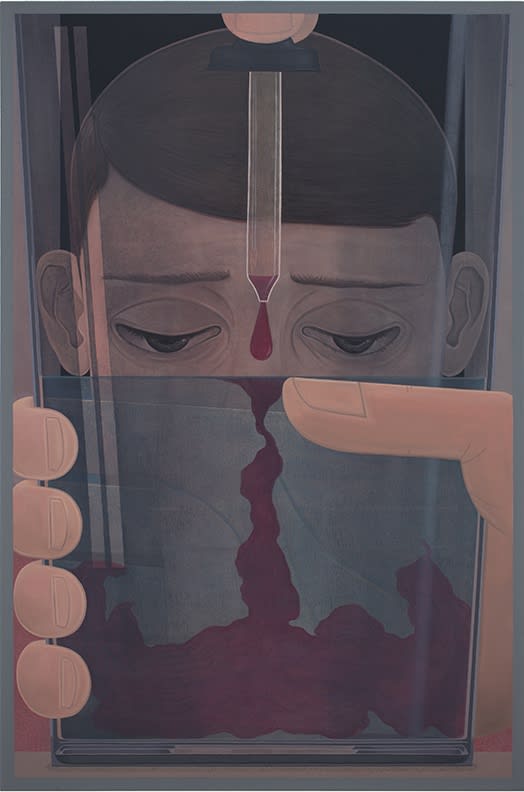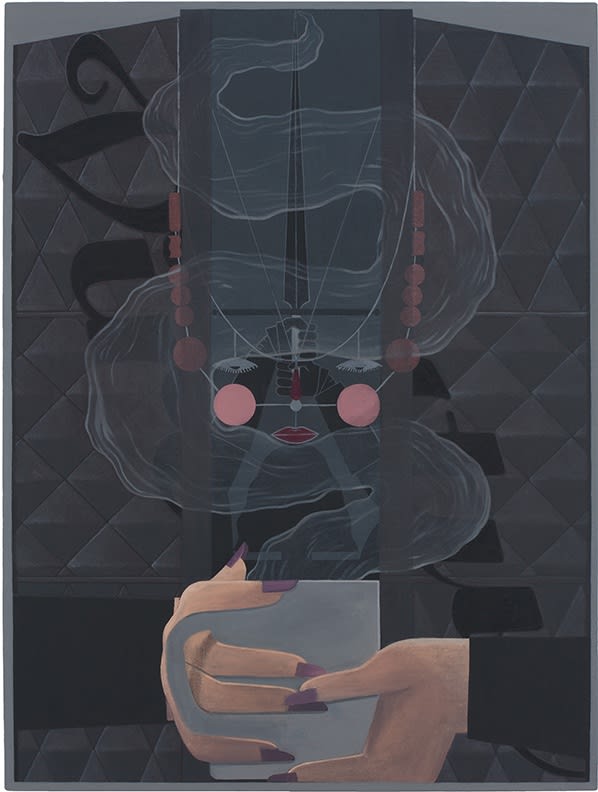-

-
-
The Devil appears as a surrogate for various archetypes––a conspiratorial friend, a scorned enemy, or at times, the artist himself. He is at once a foe to be vanquished and a sly, picaresque hero, providing an infinite set of entry points for the viewer to project their own definitions of “right” and “wrong”. In the titular painting of the show, “so super sorry sir!”, the Devil takes the role of a hysterical martyr, at once offering his patriarchal tormentor a flower, while stabbing himself with a sword. The painting reimagines a memory of a forced apology extracted from the artist by a homophobic teacher. Instead of flatly submitting, the Devil flamboyantly and sibilantly disobeys. Deploying icons of the Virgin Mary interspersed with images of historical gay villains, the work indulges both the aggression of sarcastic defiance and the kinky masochism of self-flagellation. Throughout the exhibition, the Devil, ever at odds with his environment and always nude, plays out this colorful iconoclasm of being a queer person. This dissonant, ever changing position associated with queerness may deny an easily resolved identity or moral stance but, ironically, is exactly what allows for the possible reconciliation of conflicting desires.
-

-
Turbulent aspects of the artist's own life inspire literal forms in the paintings ECT and Ketamine, titles of treatments for severe mood disorders. Here, the body is abstracted into outlines and shapes, reduced merely to a structure or vessel to be filled, effected and redeemed by external forces. In ECT (short for electroconvulsive therapy), fractured images of sunrises and sunsets suggest the ecstasy of returning from darkness, an ineffable capacity for pleasure that simultaneously evokes a sense of pain. In contrast, paintings such as Submission and Defiance use the body to evoke a quieter state of contemplation. Hands are anthropomorphized into the body itself, recalling intimate moments where we find ourselves on our knees such as in prayer or surrender, or standing in opposition.
-
-

-
Throughout Stamm’s practice, text highlights the talkative self-awareness implicit in his paintings. Whether functioning as the headspace of the artist, of the subject, or an omniscient voice, the use of text animates a thought into an object. In Ketamine, for example, a K-pop music video the artist watched during an infusion, inspires words written along the frame which read “Fun! My heart melts! Fun! Sweat Drips Down! Fun! Feels Dizzy! What’s wrong with me?”. Circling the figure like a lasso, as would a song maniacally stuck in our head, the text reminds us how obsessively and to what length we will go on our quest to induce a feeling of happiness.
-
-
-
-

-

-
More on michael stamm
-

artforum: michael stamm at dc moore gallery
January 4, 2018Woe to the modern young urbanite who tries to remedy his existential queasiness with the sundry potions and palliatives offered up through the wellness-industrial complex. Is there any homeopathic pill,... -

Art in america: Michael Stamm
January 1, 2017Painter Michael Stamm applies thin glazes in multiple layers to create tightly composed surfaces with an almost overwrought quality. When I visited Stamm in his Brooklyn studio, he told me... -

Village Voice: The exquisite therapy of michael stamm's paintings
December 1, 2017A couple of years back, I met the painter Michael Stamm while I was doing studio critiques at New York University, where he was a grad student. Struck by the...
-
Michael Stamm: "so super sorry sir!"
Past viewing_room




